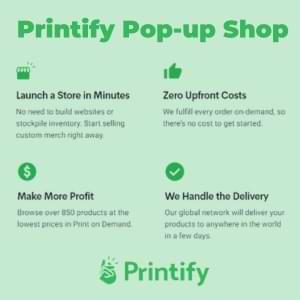Small Business Marketing Plan Guide: Strategies for Small Businesses
If you’re a small business owner, you know how important it is to market your business effectively. But with limited resources and time, it can be challenging to create a marketing plan that drives results. That’s why developing a step-by-step small business marketing plan to reach your target audience and achieve your goals is crucial.
By following these steps, you’ll be well on your way to creating an effective marketing plan that helps grow your small business.
Defining Your Target Market
Discovering who your ideal customer is and what they need is crucial for creating an effective marketing plan for your small business. Defining your target audience helps you create tailored strategies that resonate with them. Your target audience is the specific group of people who are most likely to buy from your small business. Identifying and understanding this group allows you to create marketing tactics that reach them effectively.
To define your target market, start by analyzing who’s already bought from you in the past. Look at their demographics, such as age, gender, income level, and location. This information will help you identify patterns in buying behavior and preferences. Use this data to create buyer personas that represent different segments of your target audience.
Once you’ve defined your target market, it’s time to understand their needs and motivations. Conduct surveys or focus groups to gather insights into what drives their purchasing decisions. Analyze social media conversations related to your industry or product category to gain further insights into what motivates them. Understanding these factors will enable you to create marketing tactics that resonate with them on a deeper level and drive conversions for your small business without breaking the bank!
Conducting Market Research for Your Small Business
You’ll want to start by figuring out what your potential customers are looking for and how you can meet their needs when conducting market research for your marketing plan for small business. This involves gathering information on their preferences, habits, and behaviors that may influence their purchasing decisions.
You can conduct surveys, interviews, or focus groups to gain insight into what they want from products and services in your industry.
Once you have gathered this information, you’ll need to analyze it to identify any trends or patterns that emerge. This will help you develop a clearer picture of who your target market is and what motivates them to make purchases.
From there, you can create a strategy that caters specifically to their needs and desires. For example, if your research shows that customers value convenience above all else, then perhaps offering online ordering or delivery options could be key selling points for your product or service.
Don’t forget that market research should be an ongoing process as consumer preferences are constantly evolving. Business owners should regularly check in with their customer base through surveys or feedback forms to ensure they are still meeting the needs of their target market.
By staying informed about the latest trends in the industry and keeping up-to-date with changes in consumer behavior, businesses can stay ahead of the curve and continue to offer products and services that resonate with their audience without losing sight of why they started conducting research in the first place: To better serve their customers’ needs through targeted marketing efforts.
Setting Marketing Goals and Objectives
Now it’s time to set your sights on achieving specific goals that will help you reach new heights for your company’s success. These goals should align with your overall small business marketing plan and be specific, measurable, achievable, relevant, and time-bound.
This is where marketing objectives come in. Marketing objectives are the specific targets you want to achieve through your marketing efforts. To set these objectives effectively, start by identifying what you hope to accomplish with your marketing plan.
Are you looking to increase brand awareness? Drive more traffic to your website or social media pages? Generate leads or sales? Once you’ve identified these goals, break them down into smaller, more manageable pieces that can be achieved within a certain timeframe.
With clear marketing objectives in place, it’s time to create a plan of action. This should outline the steps you need to take in order to achieve each objective and the resources required for each step. Be sure to assign responsibilities and deadlines for each task so that everyone involved knows what they need to do and when they need to do it by.
By having a detailed plan of action in place, you’ll be better equipped to execute on your marketing objectives and ultimately achieve greater success for your small business.
Developing Your Unique Selling Proposition (USP) for Small Business Marketing
Crafting your unique selling proposition (USP) is crucial for any small business marketing plan. Your USP serves as the foundation of your brand and sets you apart from competitors. It communicates what makes your product or service unique and why potential customers should choose you over others in the market.
Developing a strong USP takes time, research, and creativity, but it can ultimately drive sales and bring success to your business. To create a compelling USP, start by identifying what specific marketing strategies will best resonate with your target audience. Consider their needs, wants, pain points, and preferences when developing your message.
Your USP should be clear, concise, and memorable while highlighting the benefits of choosing your business over others in the industry.
Use language that connects with potential customers emotionally to make them feel valued and understood. Once you have developed a solid USP for your small business marketing plan template, use it consistently across all touchpoints including website copy, social media posts, advertisements, and customer interactions.
Make sure it is prominently displayed on all marketing materials to reinforce its importance to both current and potential customers. By crafting a strong USP that resonates with consumers’ needs and desires while distinguishing yourself from competitors in the market, you can build long-lasting relationships with customers who value what you offer.
Crafting a Marketing Plan Brand Identity
Creating a strong brand identity is essential for standing out in a crowded market and building lasting relationships with customers who value what you offer.
When crafting a brand identity, it’s important to consider your small business marketing plan template and align your branding efforts with your overall business goals. Your brand should be consistent across all channels, including your website, social media profiles, and advertising materials.
To start crafting a brand identity that resonates with your target audience, consider the key elements of branding: logo design, color scheme, tone of voice, imagery style, and messaging. By developing these elements in line with your business goals and customer preferences, you can create a personalized marketing plan that sets you apart from competitors.
Remember that creating a strong brand identity is an ongoing process that requires consistency and attention to detail. As you continue to build relationships with customers and refine your business strategy over time, make sure to revisit your branding efforts regularly to ensure they are still aligned with your evolving goals.
By doing so, you can establish a recognizable presence in the market and foster long-term loyalty among customers who value what you have to offer.
Creating a Marketing Budget
You need to allocate funds strategically when creating a marketing budget for your small business. Many small business owners make the mistake of either overspending on marketing or not allocating enough funds to reach their target audience effectively.
In order to avoid these pitfalls, you should analyze your business’s financial situation and determine a realistic budget that can be allocated towards marketing efforts. Once you have determined a budget, it is important to prioritize where those funds will be spent.
Consider which marketing channels are most effective in reaching your target audience and which ones align with your brand identity. For example, if your target audience is primarily active on social media platforms, then allocating more funds toward social media advertising may be more effective than traditional print ads.
It is also important to regularly evaluate and adjust your marketing budget as needed. Analyze the ROI (Return on Investment) for each marketing channel and adjust accordingly. By monitoring the effectiveness of each campaign, you can maximize the impact of your outreach efforts while staying within your allocated budget.
Remember that creating a well-defined marketing plan for a small business requires strategic planning and ongoing evaluation in order to achieve success.
Choosing Effective Channels for Successful Marketing
Let’s explore the best ways to connect with your target audience and drive sales through savvy promotion. Choosing effective marketing channels is a crucial step in creating an effective marketing plan for a small business.
To start, it’s important to identify who your target audience is and where they spend their time. This will help you determine which marketing channels are the most effective for reaching them.
There are many different marketing channels available for businesses today, including social media advertising, email marketing, content marketing, and influencer partnerships. It’s important to choose specific marketing strategies that align with your business goals and budget.
For example, if you have limited funds but want to reach a large audience quickly, social media advertising may be the way to go. On the other hand, if you have more time than money, content marketing can be a great way to build relationships with potential customers over time.
Ultimately, an effective marketing plan combines multiple channels that work together seamlessly to reach your target audience at every stage of their customer journey. By choosing the right mix of channels and strategies based on your unique goals and budget, you can create an effective marketing plan that drives sales and grows your business without breaking the bank.
Implementing a Content Marketing Strategy
Implementing a content marketing strategy is essential for reaching your target audience and driving sales growth in your marketing plan for your business. By creating valuable and informative content, you can establish yourself as an expert in your industry and build trust with potential customers.
Here are four key steps to implementing a successful content marketing strategy:
- Define Your Target Audience: Before creating any content, it’s important to understand who your target audience is so that you can tailor your messaging to their specific needs and interests.
- Develop a Content Plan: Once you know who you’re targeting, create a plan for the type of content you want to produce (e.g., blog posts, videos, social media updates) and when/how often you’ll publish it.
- Create High-Quality Content: Your content should be well-written, visually appealing, and provide value to your audience. Consider outsourcing some or all of this work if necessary.
- Promote Your Content: Don’t let your hard work go unnoticed! Share each piece of content on relevant social media channels, via email newsletters, or through other digital marketing efforts.
By implementing a content marketing strategy into your overall marketing plan for success of your marketing efforts, you can attract new customers while also keeping current ones engaged with valuable information about products or services they may not have known about otherwise. Remember that consistency is key – make sure to stick with the plan and consistently produce high-quality content that resonates with your target audience.
Leveraging Social Media Marketing
Social media is the ultimate powerhouse in building brand awareness and skyrocketing growth for any savvy entrepreneur out there. It’s a powerful tool that allows you to connect with your target audience, promote your products or services, and engage with potential customers.
When it comes to creating a marketing plan for your business, social media marketing should be at the top of your list.
One of the biggest advantages of social media marketing is its ability to reach a large number of people at once. With platforms like Facebook, Twitter, Instagram, and LinkedIn, you can easily share content that resonates with your target audience. By regularly posting engaging content on these platforms, you can build an online community around your brand and encourage repeat visits from customers.
However, social media marketing shouldn’t be the only component of your digital marketing strategy. It should work hand-in-hand with other tactics such as content marketing. Creating high-quality blog posts or videos that provide value to your audience can help establish credibility and authority in your industry.
In conclusion, leveraging social media marketing alongside other digital marketing efforts will help build a strong online presence for your small business and ultimately drive growth over time.
Building a Strong Online Marketing Presence
Now that you’ve learned about leveraging social media marketing, it’s time to take your online presence to the next level. Building a strong online presence is crucial in today’s digital age, and it should be a key component of any marketing plan for a small business.
By establishing yourself as an authority in your industry and creating valuable content for your target audience, you can attract more customers and increase your brand awareness.
One of the most effective ways to build a strong online presence is through content marketing. This involves creating high-quality content that provides value to your audience, such as blog posts, videos, infographics, and social media posts. Your content should be informative, engaging, and shareable so that people will want to read it and share it with their own networks. You can also use SEO (search engine optimization) techniques to ensure that your content ranks well in search engines like Google.
To create a successful content marketing strategy, you’ll need to develop a digital marketing plan template that outlines your goals, target audience, messaging, channels, tactics, metrics, and budget. This will help you stay focused on what matters most and measure the effectiveness of your efforts over time.
You may also want to consider partnering with influencers or other businesses in your industry to amplify your message and reach new audiences. With the right approach and consistent effort over time, building a strong online presence can help you achieve long-term success for your small business without breaking the bank or sacrificing quality.
Designing Eye-Catching Marketing Materials
You can easily create eye-catching materials that’ll grab your target audience’s attention and make them excited about what you offer.
When designing marketing materials for your small business, it’s important to keep in mind the overall message you want to convey. Your materials should be visually appealing, informative, and reflect the personality of your brand.
To evoke an emotional response in your audience, consider the following tips:
- Use bright colors and bold fonts to catch their eye
- Include compelling visuals such as images or videos that showcase your products or services
- Highlight customer reviews or testimonials that speak to the quality of your business
- Craft a clear call-to-action that encourages potential customers to take action
Incorporating these tips into your content marketing plan can help boost engagement with your target audience and ultimately drive more sales for your small business.
Remember, by creating eye-catching marketing materials, you’re not only promoting what you have to offer but also showcasing why customers should choose you over competitors.
So start brainstorming ideas for designs that stand out from the crowd and effectively communicate what makes your business unique.
With a solid marketing plan in place and well-designed materials at hand, success is just around the corner!
Measuring and Analyzing Marketing Performance
It’s time to take a closer look at how well your efforts are paying off and see what changes you can make to keep growing. Measuring and analyzing marketing performance is crucial to the success of any small business. Without proper metrics, it’s difficult to know whether or not your current marketing plan is effective.
To measure the success of your marketing plan, start by setting specific goals for each campaign. For example, if you’re running a social media ad campaign, set a goal for the number of clicks or conversions you want to achieve. Use tracking tools such as Google Analytics or social media insights to monitor these metrics in real time.
By regularly reviewing your progress against these goals, you’ll be able to identify areas where you need improvement. An example of a marketing plan could include regular reporting on key performance indicators (KPIs) such as website traffic, lead generation rates, conversion rates, customer acquisition costs, return on investment (ROI), and more.
Use this information to adjust your strategy over time and optimize campaigns that are performing well while cutting those that aren’t delivering results. By constantly measuring and analyzing your marketing performance, you’ll be able to stay ahead of the competition and continue growing your business long-term without wasting valuable resources on ineffective campaigns.
Refining Your Small Business Marketing Strategies
Refining your marketing strategies is essential for achieving sustained growth and staying competitive in today’s rapidly evolving marketplace. As a small business, it’s crucial to make sure that every element of your marketing plan works efficiently towards achieving your goals.
To refine your approach, start by analyzing the results of previous campaigns and identifying what worked and what didn’t. Use this information to adjust your tactics accordingly and create more successful marketing efforts.
One key element of refining your marketing strategies is identifying your target audience accurately. If you haven’t already done so, take the time to define who your ideal customer is based on their demographics, needs, behaviors, and preferences. This will help you tailor your messaging appropriately and maximize the effectiveness of each campaign. Additionally, consider using social media platforms to reach out to potential customers directly or collaborate with influencers in your niche.
Another crucial factor in refining your marketing strategies is monitoring metrics regularly. By tracking performance indicators such as website traffic, conversion rates, click-through rates (CTRs), cost-per-acquisition (CPA), return-on-investment (ROI), etc., you can determine which channels are delivering the best results for you—and allocate resources accordingly. This way, you can optimize campaigns over time by tweaking ads’ creative assets or adjusting targeting parameters until they achieve optimal performance levels without wasting money on ineffective ads.
Refining your marketing strategies should be an ongoing process that involves testing new ideas while evaluating existing ones continuously. Keeping these elements in mind will help ensure that every aspect of your plan contributes effectively towards meeting business objectives while keeping pace with changes in consumer behavior or market trends over time—ultimately leading to better outcomes for any small business looking to succeed in an increasingly competitive landscape!
Utilizing Influencer Marketing to Promote Your Business
Now that you’ve refined your marketing strategies, it’s time to explore a new method that can help boost your business marketing efforts. Have you ever considered utilizing influencer marketing?
This powerful technique involves partnering with social media personalities who can promote your product or service to their followers. Influencer marketing has become increasingly popular in recent years because it allows businesses of all sizes to reach a wider audience and increase brand awareness.
It’s especially effective for small businesses as it provides a cost-effective way to market products and services without breaking the bank. To get started, you need to identify influencers who align with your brand values and target audience.
Once you’ve identified potential influencers, the next step is to create an influencer marketing plan template. This should outline the goals, budget, timelines, and expectations for the campaign. You should also provide influencers with clear instructions on what they need to do and what results are expected from them.
By doing this, you can ensure a successful marketing campaign that will generate leads, sales, and loyal customers for your small business without having to spend too much money on traditional advertising methods.
Exploring Local Marketing Opportunities for Brand Awareness
If you want to increase your local customer base and stand out from the competition, exploring local marketing opportunities is crucial. Even if your small business operates online or caters to a broader audience, engaging with your immediate community can help you build stronger relationships with potential customers and establish yourself as a trustworthy brand.
Here are some specific ways you can tap into local marketing opportunities:
- Attend community events: Look for festivals, fairs, and other gatherings in your area where you can set up a booth or participate as a sponsor. This allows you to showcase your products or services directly to people who live nearby.
- Utilize local media outlets: Pitch stories about your business to local newspapers, radio stations, and TV channels. You may also consider collaborating with influencers who have a strong presence in your area.
- Create partnerships: Connect with other small businesses in your community that complement yours without being direct competitors. Offer cross-promotions or bundle deals that benefit both parties.
- Optimize for local SEO: Make sure your website is optimized for searches related to your location by including relevant keywords, creating pages for each of your physical locations (if applicable), and claiming/verifying all of your business listings on Google My Business.
Incorporating these strategies into a comprehensive marketing plan for a small business can make all the difference when it comes to reaching new customers. By focusing on specific marketing tactics that target the people closest to you, you can create deeper connections within the community and establish yourself as an integral part of it.
One thing to keep in mind is that while digital marketing techniques like social media advertising and email campaigns play an important role in today’s market, they shouldn’t be solely relied upon. Local marketing opportunities provide unique advantages because they allow potential customers to see and experience what makes your business special firsthand. With enough effort put towards building relationships with those around you, word-of-mouth referrals could become one of the most powerful tools in your marketing arsenal.
Developing Customer Relationship Management (CRM)
To build strong relationships with your customers and keep them coming back, you’ll need to develop a CRM system that allows you to track their preferences and interactions with your brand. A CRM system can help you understand who your most loyal customers are, what they like about your products or services, and how often they purchase from you.
With this information in hand, you can tailor your marketing efforts to meet their needs and preferences. When developing a CRM system for your small business, it’s important to consider the tools and technology available to you. There are many affordable software solutions available that make it easy to track customer data, automate email marketing campaigns, and analyze customer behavior.
You may also want to invest in tools that allow you to personalize the customer experience by sending targeted messages or offering customized promotions. By developing a comprehensive CRM strategy as part of your overall marketing plan for a small business, you can grow your business by building strong relationships with existing customers while attracting new ones.
Whether through personalized email campaigns or targeted social media advertising, a well-executed CRM strategy can help ensure that every interaction with your brand is positive and engaging for customers. By investing time and resources into developing an effective CRM system, you’ll be better positioned to maximize the return on investment from all of your marketing efforts.
Implementing an Email Marketing Strategy for Your Small Business
Implementing email campaigns can help you stay connected with your customers and provide them with personalized content that keeps them engaged with your brand. As a small business owner, including email marketing in your marketing plan is crucial to increase customer retention, conversion rates, and sales.
By sending regular newsletters or promotional emails, you can keep your customers updated on new products or services while also building trust and loyalty.
To start an effective email marketing campaign for your small business, consider the following tips:
- Build a targeted list: Collect the emails of interested customers through sign-ups on your website or social media channels.
- Segment your list: Categorize subscribers by demographics or purchase history to send targeted messages that are relevant to their interests.
- Create engaging content: Use compelling subject lines and personalize emails with first names to grab attention. Include visually appealing graphics or videos to make the message more interesting.
By implementing these strategies, you can create a successful email marketing campaign that drives engagement and sales for your small business.
Remember to track metrics like open rates and click-through rates to continually improve the effectiveness of each campaign.
Optimizing Search Engine Marketing (SEM)
You want to be the shining star in the vast online universe, and optimizing your search engine presence is the rocket fuel you need to make sure your brand gets noticed by potential customers. Search Engine Marketing (SEM) involves using paid advertising to increase visibility on search engines like Google, Bing, and Yahoo. It’s a critical component of any strategic marketing plan for a small business.
To optimize your SEM efforts, start by researching keywords that are relevant to your business and have high search volumes. These keywords will form the foundation of your ad campaigns. Use them in your ad copy and landing pages, but be careful not to stuff them in too much – this can hurt your rankings. Instead, focus on creating high-quality content that provides value for users.
Finally, monitor and analyze the results of your SEM campaigns regularly. Look at metrics like click-through rate (CTR), conversion rates, and cost-per-click (CPC) to see how well they’re performing. Make adjustments as needed – try new ad copy or targeting options – until you find what works best for your business.
With a strong SEM strategy in place, you’ll be able to attract more traffic to your website and ultimately drive more sales for your small business.
Embracing Video Marketing Tactics
Embracing video marketing can be a game-changer for your brand when creating a marketing plan for a small business. This strategy allows you to showcase your products or services in an engaging and visually appealing way, making it easier for potential customers to connect with your brand. Video marketing is also an excellent way to stand out from the competition and establish yourself as an authority in your niche.
One example of a marketing plan that incorporates video marketing is creating product demonstration videos. These videos can showcase the features and benefits of your products, giving potential customers a better idea of what they can expect when purchasing from you. You can also create behind-the-scenes videos that give viewers insight into how your business operates, which helps build trust and credibility with your audience.
To implement video marketing successfully, it’s essential to have a clear strategy in place.
Start by identifying the goals you want to achieve with this tactic and who your target audience is. Then, create high-quality videos that align with those goals and resonate with your audience. Finally, promote those videos on social media platforms where you know your target customers are active.
By embracing video marketing as part of your overall marketing plan for a small business, you’ll be able to engage more effectively with potential customers while establishing yourself as an authority in your field. Remember to always keep things organized and strategic while incorporating this approach into all aspects of promoting your brand online!
Maximizing Word-of-Mouth Advertising
Magnify your brand’s buzz by mastering the art of word-of-mouth advertising with memorable messaging. Word-of-mouth advertising is a powerful tool that can help your small business grow and succeed, especially in today’s digital age where people rely heavily on recommendations from their peers and online reviews. It’s a cost-effective way to spread the word about your business without breaking the bank.
To maximize word-of-mouth advertising, you need to make sure that your customers have an excellent experience with your product or service. This means going above and beyond to exceed their expectations and addressing any issues they may have promptly. Happy customers are more likely to refer others to your business, so it pays to invest in exceptional customer service.
Incorporating word-of-mouth advertising into your marketing plan for a small business can be as simple as encouraging satisfied customers to leave positive reviews on social media or review sites like Yelp or Google My Business. You can also offer incentives such as referral discounts or loyalty programs that reward customers for spreading the word about your business.
By incorporating these strategies into a sample marketing plan and highlighting them in the executive summary, you can create a powerful marketing strategy that will help you grow your customer base and increase revenue without spending a lot of money on traditional advertising channels.
Frequently Asked Questions: Successful Marketing Plan for Your Local Business
How can you effectively track the success of your marketing plan?
To effectively track the success of your marketing plan, it’s important to first establish clear and measurable goals. These goals should align with your overall business objectives and be specific, realistic, and time-bound.
Once you have established your goals, you can use a variety of tools to monitor progress. These may include website analytics, social media metrics, customer feedback surveys, and sales data.
It’s also important to regularly review and analyze this data to identify trends or areas for improvement. By continuously tracking the success of your marketing efforts, you can make informed decisions about future strategies and ultimately drive growth for your small business.
What are some common mistakes to avoid when developing a marketing plan for a small business?
You’re a marketing genius! You’ve got the skills and know-how to launch your small business into the stratosphere.
But before you get too carried away, let’s talk about some common mistakes that can derail even the most brilliant marketing plan.
First off, don’t assume that one size fits all when it comes to your target audience. Know your customer inside and out, and tailor your messaging accordingly.
Also, avoid jumping on every new social media platform that pops up like it’s the holy grail of marketing. Focus on platforms where your customers are actually spending their time.
And finally, don’t forget to track and analyze data regularly so you can adjust your strategy as needed.
With these tips in mind, you’ll be well on your way to creating a killer marketing plan for any small business!
How can you tailor your marketing plan for different seasons or events throughout the year?
To tailor your marketing plan for different seasons or events throughout the year, you need to first identify the specific times of the year that are relevant to your business.
For example, if you own a clothing store, then winter and summer sales may be more important than other times of the year.
Once you have identified these key periods, it’s important to create promotions and campaigns that are tailored to those times. This could include creating seasonal products or services, offering discounts or special deals during these periods, and using social media platforms to promote these offers effectively.
Additionally, it’s essential to track your results carefully so that you can adjust your marketing plan as needed based on customer response and market changes.
By tailoring your marketing plan in this way, you can ensure that you’re maximizing opportunities during key times of the year while still maintaining consistency with your overall brand message and values.
What are some affordable yet effective marketing strategies for small businesses with limited budgets?
If you’re a small business owner with limited funds, it’s important to focus on cost-effective marketing strategies. One effective strategy is utilizing social media platforms to connect with customers and build brand awareness. Consistently posting engaging content, responding promptly to messages and comments, and utilizing targeted ads can help increase your reach without breaking the bank.
Another affordable option is email marketing, which allows you to directly communicate with your audience through personalized newsletters or promotions.
Additionally, networking within your community and attending local events can help spread the word about your business while building valuable relationships with potential customers and partners.
By being strategic with your marketing efforts, even businesses on a tight budget can see significant growth in their customer base and revenue.
How can you measure the ROI of your marketing efforts in terms of increased sales or customer engagement?
As a small business owner, it’s critical to determine the ROI of your marketing efforts to ensure company success and growth. To measure the effectiveness of your marketing strategies, it’s important to track metrics such as increased sales or customer engagement.
One way to do this is by using analytics tools that provide insights into website traffic, social media engagement, and other key performance indicators. By analyzing this data, you can make informed decisions about where to allocate resources to maximize ROI.
Remember, measuring ROI isn’t just about tracking numbers. It’s about understanding how your marketing efforts impact the bottom line and making strategic moves for future success.
Final Thoughts on a Small-Business Marketing Plan for Your Business
By following the steps outlined in this article, you’re well on your way to reaching and engaging with your target audience. Remember that marketing is an ongoing process, so be sure to regularly track and adjust your strategies as needed.
One interesting statistic to consider is that 80% of consumers are more likely to do business with a company if it offers personalized experiences. This means that personalization should be a key focus in all aspects of your marketing plan, from email campaigns to social media content.
By tailoring your messaging and offerings to meet the specific needs and preferences of your target market, you can build stronger connections with customers and ultimately increase sales.
As you continue to grow and evolve your business, keep these marketing strategies in mind. With dedication and consistency, they can help you stand out from competitors and create a strong brand identity that resonates with customers. Good luck!
Create a marketing plan for a small business. Maximize profits and grow your brand with these marketing strategies. A step-by-step small business marketing plan is crucial to reach your target audience and achieve your goals. Click To Tweet
Note: Some links on this page are affiliate links meaning that if you click on my link and make a purchase, I will receive a small commission. It does not however affect the price you pay. Plus, it’s a great way to support me and the content I’m providing.







